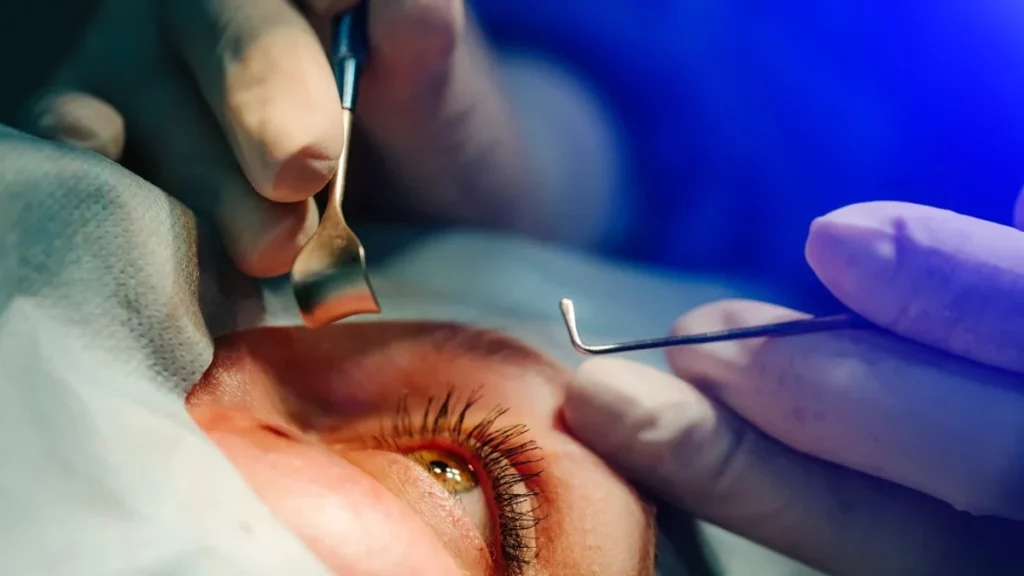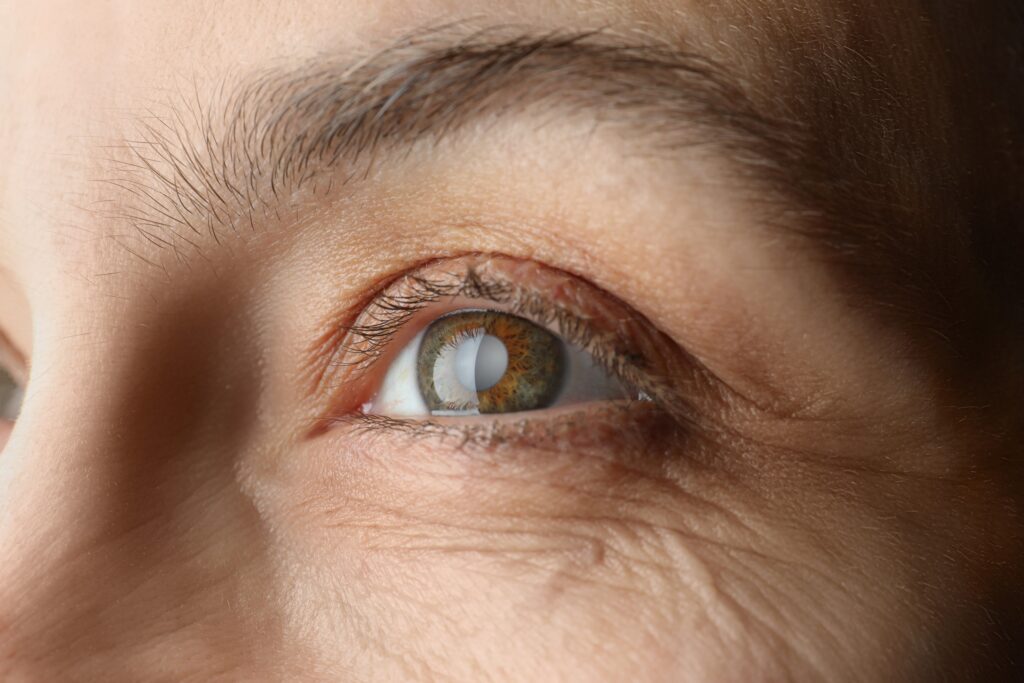Understanding Cataracts
What are Cataracts?
Cataracts are a clouding of the lens in the eye that can impair vision. The lens, located behind the iris and pupil, plays a crucial role in focusing light onto the retina at the back of the eye. Over time, proteins in the lens can clump together, leading to a gradual decline in vision quality. This cloudiness can affect one or both eyes, and while cataracts are often associated with aging, they can also occur due to various other factors.
When cataracts develop, daily tasks such as reading, driving, and recognizing faces become increasingly difficult. Fortunately, cataracts can be treated effectively through surgery, which is one of the most common and successful procedures performed worldwide. During the cataracts surgery, the cloudy lens is removed and typically replaced with an artificial intraocular lens, restoring clarity and improving the patient’s quality of life. Many patients report immediate improvements in their vision following the procedure, allowing them to return to their normal activities with renewed confidence.
Causes and Risk Factors of Cataracts
Understanding the causes and risk factors for cataracts is essential for prevention and early treatment. The primary causes include:
Age:
The most significant risk factor, with the likelihood of developing cataracts increasing as one grows older.
Genetics:
A family history of cataracts can increase your likelihood of developing them.
Health conditions:
Diabetes, hypertension, and obesity are associated with a higher risk.
Exposure to UV rays:
Prolonged exposure to sunlight without protection can lead to cataract formation.
Certain medications:
Long-term use of corticosteroids and some other medications can contribute to the development of cataracts.
Awareness of these factors can help individuals make informed lifestyle choices to mitigate their risk. It’s advisable to have regular eye examinations, especially if you have risk factors. In addition to these preventive measures, maintaining a healthy diet rich in antioxidants, such as vitamins C and E, may also play a role in reducing the risk of cataracts. Foods like leafy greens, nuts, and citrus fruits can contribute to overall eye health and help protect against oxidative stress that can lead to lens clouding.

Common Symptoms of Cataracts
Recognizing the symptoms of cataracts early can lead to timely diagnosis and treatment. Common symptoms include:
Blurry or cloudy vision.
Difficulty seeing at night or in low light conditions.
Seeing halos around lights.
Faded colors or diminished color perception.
Frequent changes in prescription glasses or contact lenses.
If you experience any of these symptoms, it’s crucial to consult an eye care professional who can perform a thorough examination and provide a diagnosis. Early detection is key, as untreated cataracts can lead to more severe vision impairment. In some cases, patients may not realize how much their vision has deteriorated until they receive treatment, which can dramatically enhance their visual acuity. Moreover, understanding the progression of cataracts can help patients prepare for potential lifestyle adjustments, such as using brighter lighting at home or utilizing magnifying devices for reading, ensuring they maintain their independence and quality of life as they navigate their visual challenges. Learn more about diminished color preception and how it affects vision at https://www.d.umn.edu/~lcarlson/wcagwg/color/perception/draft2.html
The Diagnosis Process
When to See a Doctor
Determining the right time to seek professional help is essential for managing cataracts effectively. If you’re experiencing symptoms such as worsening vision, increased difficulty in seeing at night, or persistent glare from lights, it’s advisable to schedule an appointment with an ophthalmologist. Early diagnosis can prevent complications and improve outcomes.
Additionally, routine eye exams are recommended, particularly for those over the age of 60 or those with other risk factors. Regular check-ups allow for proactive monitoring and early intervention, which may help postpone the need for surgery. It’s important to note that some individuals may not recognize the gradual changes in their vision, making it even more critical to adhere to a regular schedule of eye examinations. Family history of cataracts or other eye conditions can also play a significant role in determining your risk, so sharing your medical background with your eye care provider is vital.
Diagnostic Tests for Cataracts
Ophthalmologists utilize several diagnostic tests to confirm the presence of cataracts and assess their severity. These tests may include:
Visual Acuity Test:
Measures how well you see at various distances.
Slit-Lamp Examination:
Allows the doctor to examine the structure of your eye, including your lens.
Retinal Exam:
Involves dilating your pupils with drops to closely inspect the retina and optic nerve.
An accurate diagnosis is vital, as it informs the best course of action for treatment and may determine whether surgery is necessary. In some cases, additional tests such as a contrast sensitivity test may be conducted to evaluate how well you can see in low-light conditions or against a bright background. This comprehensive approach ensures that your ophthalmologist has a complete picture of your eye health and can tailor a treatment plan that best suits your needs.
Interpreting Your Diagnosis
Understanding your diagnosis is crucial as it helps you make informed decisions regarding your treatment options. After performing the required tests, your ophthalmologist will explain the severity of your cataracts and the implications for your vision.
The doctor may categorize cataracts into different stages—from early to advanced—allowing for a clearer understanding of your situation. Depending on the diagnosis, options may include monitoring your condition or discussing surgical intervention. It’s also beneficial to ask questions about the nature of the cataracts, potential progression, and what lifestyle adjustments you might consider to manage your symptoms effectively. Engaging in discussions about your vision goals and preferences can help your ophthalmologist recommend the most appropriate treatment pathway, ensuring that you remain an active participant in your eye care journey.
Preparing for Cataracts Surgery
Choosing the Right Surgeon
Selecting a qualified and experienced surgeon is one of the most important steps in preparing for cataract surgery. Research potential surgeons by considering their credentials, experience, and patient reviews. Seek recommendations from your primary care physician or optometrist, and don’t hesitate to ask questions about their experience with cataract procedures.
It’s also wise to inquire about the type of lens options available, as different lenses can impact your post-surgery vision outcomes significantly. Choosing a surgeon you feel comfortable with can help alleviate anxiety associated with the procedure. Additionally, many surgeons offer virtual consultations, allowing you to meet with them from the comfort of your home. This can be particularly beneficial for those who may have mobility issues or live far from the surgical center. Understanding the surgeon’s approach to patient care and their commitment to ongoing education can also provide peace of mind, knowing that you are in capable hands.
Pre-Surgery Consultation
During the pre-surgery consultation, your ophthalmologist will conduct a comprehensive evaluation of your eye health. This often includes a detailed discussion about your medical history and any medications you are currently taking.
Moreover, the surgeon will explain the procedure in detail, including what to expect and potential risks. This is the perfect opportunity to ask any lingering questions you may have and to clarify your understanding of the surgery and recovery process. The consultation may also involve advanced diagnostic tests, such as corneal topography or optical coherence tomography, which help the surgeon tailor the procedure to your specific needs. Understanding these tests can empower you with knowledge about your eye health and how it relates to the surgery, making you an active participant in the decision-making process.
Pre-Surgery Checklist
Being well-prepared for surgery can enhance the outcome and ease the recovery process. Here are essential steps to include in your pre-surgery checklist:
Arrange for transportation to and from the surgery center.
Follow the surgeon’s instructions about medications and dietary restrictions.
Gather necessary documents, including insurance information and identification.
Consider having a friend or family member stay with you after the procedure.
Prepare your home for recovery by setting up a comfortable resting area.
Following this checklist can help streamline the process, ensuring a smoother experience on the day of surgery. Additionally, it may be beneficial to stock up on essential supplies, such as eye drops prescribed by your surgeon, comfortable clothing, and easy-to-prepare meals. Having these items readily available can minimize stress and allow you to focus on your recovery. Furthermore, consider creating a schedule for your first few days post-surgery, including rest periods and follow-up appointments, to help you manage your time effectively and ensure you adhere to your recovery plan. To read more about the precautions you can take before surgery click here.
The Cataracts Surgery Procedure
What to Expect on the Day of Surgery
On the day of cataract surgery, you will typically arrive at the surgical center early to complete any remaining paperwork. After checking in, you may be taken to a preoperative area where you’ll meet the surgical team, including your surgeon and anesthesiologist.
Once you’re ready, the surgical team will administer medications to help you relax. Generally, cataract surgery is performed under local anesthesia, meaning you will be awake but won’t feel any pain during the procedure. The entire process usually lasts less than an hour. It’s common to feel a mixture of excitement and anxiety, but rest assured that the surgical team is highly trained to ensure your comfort and safety throughout the process.

Step-by-Step Guide to Cataracts Surgery
Cataract surgery is a straightforward procedure that typically follows these steps:
Anesthesia: Local anesthesia is administered, and you may be given a mild sedative.
Incision: The surgeon makes a small incision in the eye.
Removing the Cataract: The cloudy lens is broken up using ultrasound waves and removed.
Implanting the Lens: An artificial intraocular lens is inserted to replace the clouded lens.
Closing the Incision: The incision heals naturally without the need for stitches.
This efficient technique allows for quick recovery and minimal discomfort, making cataract surgery one of the most commonly performed surgeries worldwide. The advancements in technology, such as the use of femtosecond lasers, have further enhanced the precision of the procedure, leading to better outcomes and reduced recovery times. Patients often express amazement at the clarity of their vision shortly after the surgery, a testament to the effectiveness of modern cataract treatment.
Post-Surgery Care in the Hospital
After the procedure, you will be monitored briefly in a recovery area to ensure there are no immediate complications. Once you’re stable, you can typically go home the same day. Your doctor will provide specific post-operative care instructions, which may include:
Using prescribed eye drops to prevent infection and reduce inflammation.
Avoiding physical strain and bending over for several days.
Wearing an eye shield while sleeping for the first week.
Following the post-surgery care instructions is vital for a successful recovery and optimal results from the procedure. Most patients notice an improvement in vision within a few days, and regular follow-up appointments are essential for monitoring healing. During these visits, your doctor will assess the healing process and may adjust your prescription for glasses, ensuring that your vision is as sharp as possible. Additionally, many patients find that they can return to their normal activities, such as reading and driving, much sooner than they anticipated, often within just a week after surgery.
Related : Cataract Surgery in Sydney: What to Expect and How It Can Transform Your Vision

